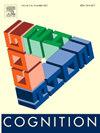Responses guide attention
IF 2.8
1区 心理学
Q1 PSYCHOLOGY, EXPERIMENTAL
引用次数: 0
Abstract
Internalizing regularities between motor responses and stimuli is crucial for adaptive functioning. However, the influence of these regularities on attentional selection remains poorly understood. This study explored whether responses, which predict the locations of search targets, direct attention toward these associated locations, a phenomenon termed response-induced attention. The experiments consist of acquisition and test phases. In the acquisition phase, participants performed a dual task involving an identification task followed by a search task. In the identification task, participants responded to the color of an object presented at the center. Immediately after this response, a search target appeared on either the left or right side. Critically, the response for the identification target predicted a more probable location of the search target. Faster responses for search targets were observed at the response-cued location than the other location, suggesting an attentional bias toward the response-cued location. In the test phase, the colors of identification targets were changed, and the responses for the identification targets were no longer informative about the search target locations. Nevertheless, search remained faster when targets appeared at the response-cued location, suggesting that responses, not colors, guided attention. This response-induced attention effect was observed in Experiment 1, where responses predicted spatially compatible target locations, as well as in Experiments 2 and 3, where they predicted incompatible locations. Experiment 4 confirmed that the observed effects resulted from the spatial distribution of attention. These findings provide new insights into the ability to learn response-stimulus regularities for the intelligent allocation of attention, demonstrating the significant role of the motor dimension in attentional selection.
反应引导注意力
内化运动反应和刺激之间的规律对适应功能至关重要。然而,这些规律对注意选择的影响仍然知之甚少。这项研究探讨了预测搜索目标位置的反应是否会将注意力引导到这些相关的位置,这种现象被称为反应诱导注意。实验分为采集和测试两个阶段。在获取阶段,参与者执行双重任务,包括识别任务和搜索任务。在识别任务中,参与者对展示在中心的物体的颜色做出反应。在这个回答之后,搜索目标立即出现在左边或右边。关键的是,识别目标的响应预测了搜索目标更可能的位置。在反应提示位置,被试对搜索目标的反应要快于其他位置,这表明被试对反应提示位置存在注意偏向。在测试阶段,识别目标的颜色发生了变化,并且识别目标的响应不再提供搜索目标位置的信息。然而,当目标出现在反应提示的位置时,搜索速度仍然更快,这表明是反应而不是颜色引导了注意力。这种反应引起的注意效应在实验1中被观察到,反应预测空间相容的目标位置,在实验2和3中被观察到,反应预测空间不相容的目标位置。实验4证实了观察到的效应与注意的空间分布有关。这些发现为注意力智能分配的反应-刺激规律的学习能力提供了新的见解,证明了运动维度在注意选择中的重要作用。
本文章由计算机程序翻译,如有差异,请以英文原文为准。
求助全文
约1分钟内获得全文
求助全文
来源期刊

Cognition
PSYCHOLOGY, EXPERIMENTAL-
CiteScore
6.40
自引率
5.90%
发文量
283
期刊介绍:
Cognition is an international journal that publishes theoretical and experimental papers on the study of the mind. It covers a wide variety of subjects concerning all the different aspects of cognition, ranging from biological and experimental studies to formal analysis. Contributions from the fields of psychology, neuroscience, linguistics, computer science, mathematics, ethology and philosophy are welcome in this journal provided that they have some bearing on the functioning of the mind. In addition, the journal serves as a forum for discussion of social and political aspects of cognitive science.
 求助内容:
求助内容: 应助结果提醒方式:
应助结果提醒方式:


